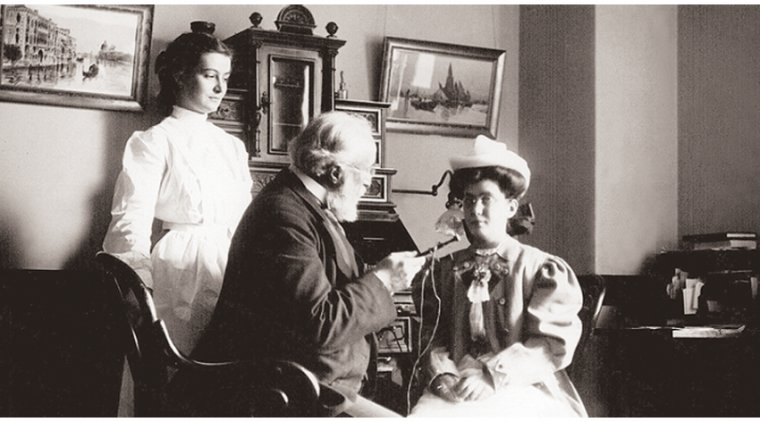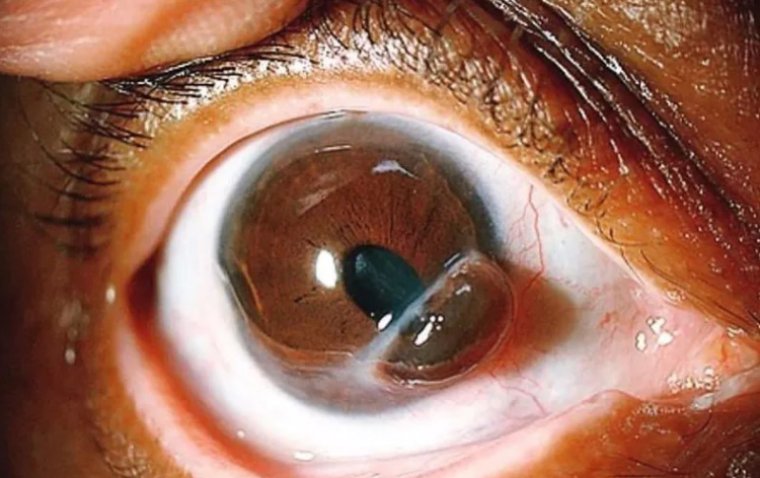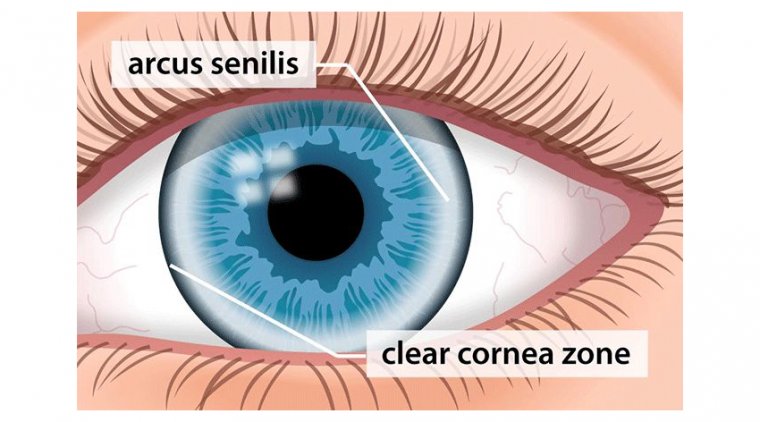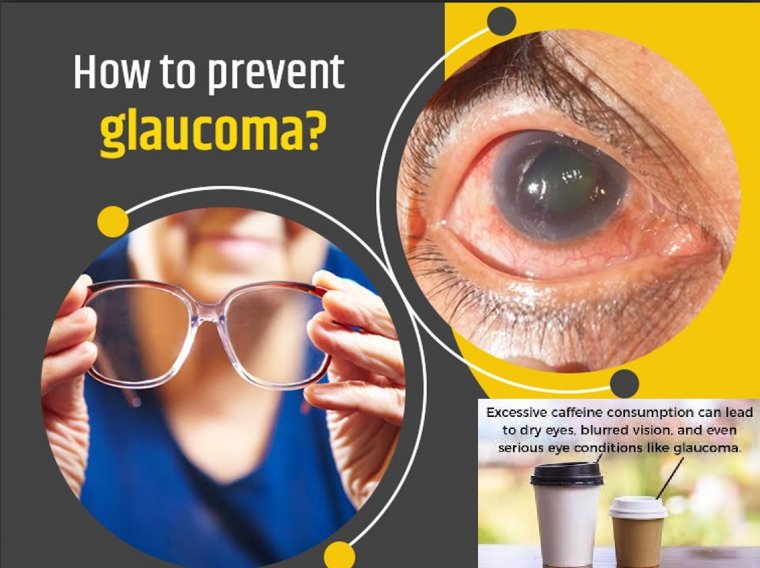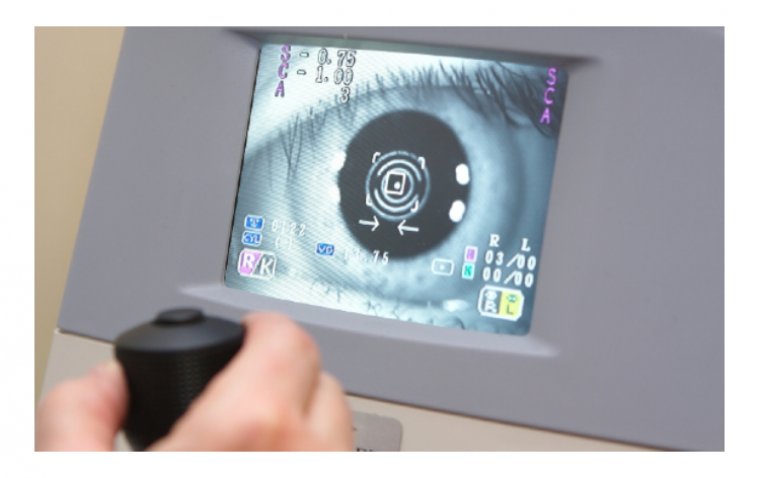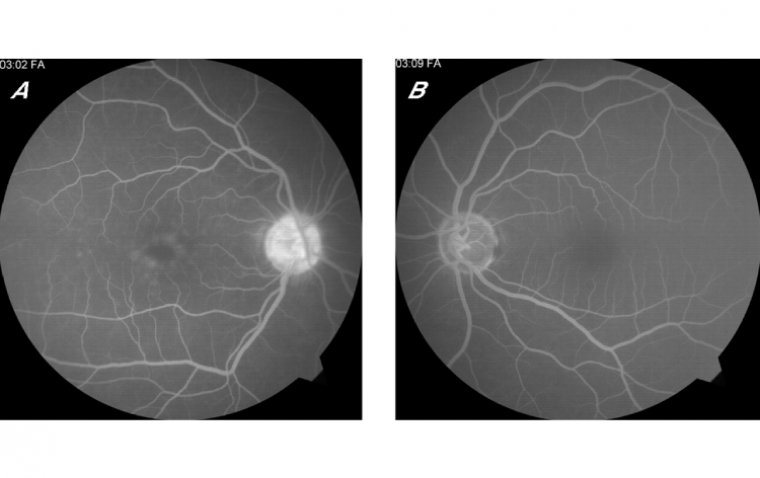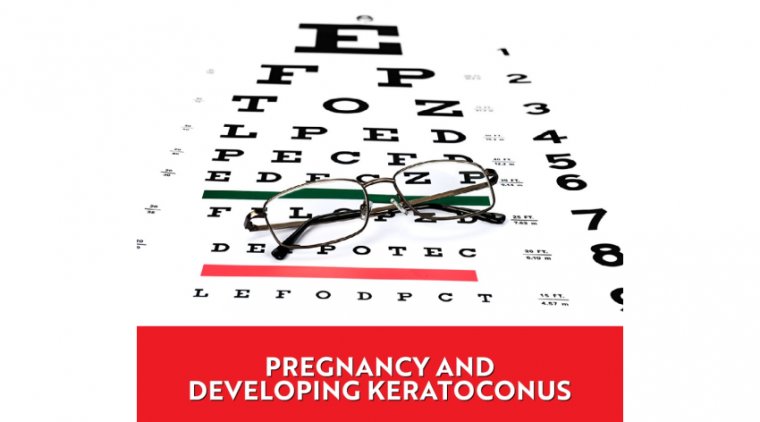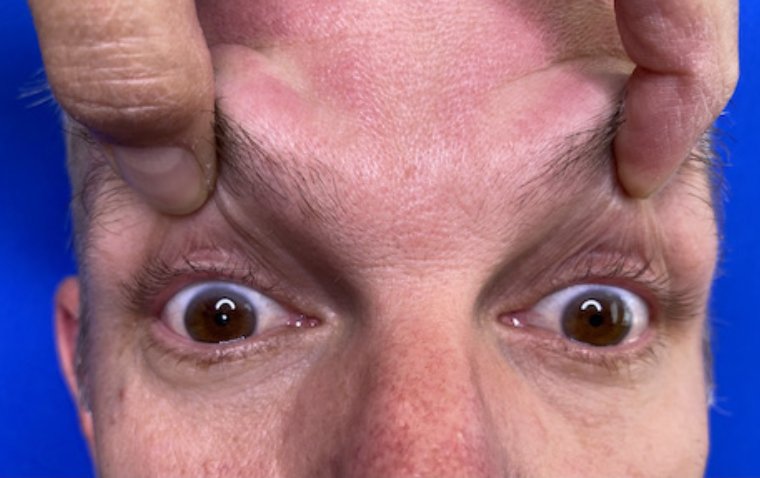
The Doll's Eye Reflex: Exploring a Vital Neurological Assessment
What is Doll’s Eye Reflex?
The Doll's Eye Reflex, also known as oculocephalic reflex or vestibulo-ocular reflex, is a crucial neurological assessment tool used to evaluate brainstem function and integrity. This reflex involves the movement of the eyes in the opposite direction of head movement to maintain stable visual fixation and is essential in maintaining balance, spatial orientation, and coordination. Understanding this reflex and its purpose is vital in the field of medical evaluations, especially in the assessment of brainstem function and possible neurological disorders.
What is the Normal Oculocephalic Reflex?
The normal oculocephalic reflex, also known as the Doll's Eye Reflex, is a neurological response that occurs when an individual's head is turned quickly in one direction. In this reflex, the eyes move in the opposite direction of the head movement, which is essential for maintaining stable visual fixation on a target. For instance, when the head is turned to the right, the eyes should move to the left to counteract the head's motion, allowing the person to maintain a clear and stable view of the environment.
This reflex is a crucial part of our everyday activities and plays a fundamental role in spatial orientation and balance. It is also vital for activities that require tracking objects or staying focused on a specific point while in motion.
A healthy and intact oculocephalic reflex is a normal response that helps ensure proper coordination between head and eye movements, contributing to overall neurological health and function. When assessing patients, medical professionals look for the presence of a normal oculocephalic reflex to determine the integrity of brainstem function and to rule out potential neurological issues.
Clinical Significance of Doll’s Eye Reflex
The Doll's Eye Reflex, also known as the oculocephalic reflex, holds significant clinical importance in the field of neurology and medical diagnostics. This reflex is a valuable tool for assessing brainstem function and plays a crucial role in several clinical scenarios. Here are some of its clinical significances:
1. Neurological Assessment: The Doll's Eye Reflex is used by healthcare professionals as a part of the neurological examination. It helps evaluate the integrity of the brainstem, which is a critical part of the central nervous system. An absent or abnormal Doll's Eye Reflex can be an early indicator of brainstem dysfunction.
2. Coma Assessment: In patients with altered states of consciousness, such as those in a coma or with impaired consciousness, assessing the Doll's Eye Reflex is essential. A positive reflex, where the eyes move opposite to head movement, indicates intact brainstem function, while an absent reflex might suggest brainstem injury or dysfunction.
3. Traumatic Brain Injury (TBI): The presence or absence of the Doll's Eye Reflex can provide insights into the extent of brain injury. In cases of head trauma, a positive reflex can indicate that the brainstem is still functioning properly, while an absent reflex might indicate damage to this critical area.
4. Brainstem Lesions: Neurologists and other healthcare providers use the Doll's Eye Reflex to detect and localize brainstem lesions. By assessing eye movement in response to head movement, they can pinpoint the exact site of the lesion within the brainstem.
5. Persistent Vegetative State (PVS): The Doll's Eye Reflex is used to differentiate between individuals in a persistent vegetative state (PVS) and those with locked-in syndrome. In PVS, the reflex is usually preserved, as it signifies an intact brainstem, while in locked-in syndrome, where patients have significant brain damage, the reflex may be absent.
6. Brain Death Confirmation: When brain death is suspected, the Doll's Eye Reflex can be one of the criteria used to confirm it. In a brain-dead patient, the reflex will typically be absent.
Signs and Symptoms of Abnormal Doll's Eye Reflex
Abnormal responses of the Doll's Eye Reflex can provide important indications of potential neurological issues. Here are some signs and symptoms of abnormal Doll's Eye Reflex and their implications:
● Absent Reflex: If the Doll's Eye Reflex is absent when it should be present, it can be indicative of severe neurological dysfunction. This includes cases of brainstem damage, brain death, or deep coma.
● Asymmetric Responses: Asymmetric responses, where one eye moves while the other does not, might suggest damage or injury to one side of the brainstem. This could be due to conditions like strokes, tumors, or trauma affecting one side of the brainstem.
● Conjugate Gaze Palsy: In some cases, the reflex may be preserved, but both eyes do not move together as they should. This can be a sign of conjugate gaze palsy, which might be due to specific brainstem lesions or neurological diseases.
● Nystagmus: Rapid and uncontrolled eye movements (nystagmus) in response to head movement can indicate vestibular system dysfunction. This can be associated with inner ear problems or other neurological issues.
● Vertical Doll's Eye Reflex Abnormalities: If the eyes do not move vertically in response to head movement, this could indicate specific brainstem lesions or disorders affecting vertical gaze control. For example, progressive supranuclear palsy is associated with vertical gaze palsy.
● Delayed Response: When there is a delay in the eye movement response following head movement, it can be suggestive of neurological impairment. A delayed response might be observed in various conditions affecting the brainstem.
● Gaze Paresis: Gaze paresis refers to reduced eye movement in response to head movement. This can be a sign of neurological damage, such as damage to the cranial nerves or brainstem.
How Do You Test a Doll’s Eye Response?
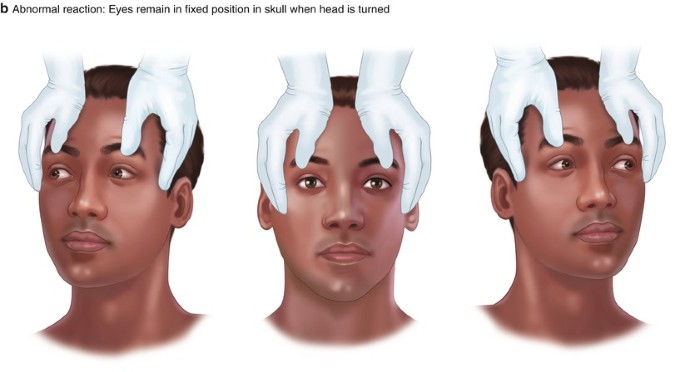
Testing the Doll's Eye Reflex is a clinical procedure that should be conducted by healthcare professionals, typically in a medical setting. It's important to follow proper technique and safety protocols. Here's a step-by-step guide on how to test a Doll's Eye Response:
Patient Preparation: Ensure that the patient is lying down comfortably and is adequately stabilized to prevent any unnecessary head movement. If the patient is unable to cooperate, it might be necessary to administer mild sedation to relax them.
Gaze Fixation: Ask the patient to fixate their gaze on a specific target, like your finger or an object, while you observe their eye movement.
Slow Head Rotation: Gently rotate the patient's head horizontally to one side at a slow and controlled speed. Ensure that the head movement is smooth and gradual to avoid sudden or jerky motions. It's crucial to maintain proper head alignment and support during the procedure.
Observe Eye Movement: As the head is turned, closely observe the movement of the patient's eyes. The normal response should involve the eyes moving in the opposite direction of the head rotation. For instance, if you turn the patient's head to the right, the eyes should move to the left (left gaze).
Return to Midline: After reaching the lateral position, bring the patient's head back to the midline or neutral position.
Repeat the Procedure: Repeat the same procedure by gently turning the patient's head to the opposite side and observing the eye movement. When turning the head to the left, the eyes should move to the right (right gaze).
Vertical Movement: In addition to horizontal movement, you can test the Doll's Eye Reflex for vertical movement. Slowly tilt the patient's head forward, observing the eyes moving upward, and then tilt the head backward, observing the eyes moving downward.
Document Findings: Document the patient's responses carefully, noting whether the eye movements are symmetrical, smooth, and appropriate in direction. Pay close attention to any signs of abnormal or asymmetric movements.
Safety Measures: Throughout the procedure, it's crucial to maintain proper head and neck support to prevent injury. Always communicate clearly with the patient, ensuring their comfort and cooperation.
Evaluate Findings: The results of the Doll's Eye Reflex test should be evaluated in the context of the patient's clinical history and other neurological assessments. Abnormal findings may indicate a need for further diagnostic tests, such as neuroimaging or consultation with a neurologist.
Doll's Eye Reflex vs. Vestibular-Ocular Reflex
The Doll's Eye Reflex, also known as the Oculocephalic Reflex, and the Vestibulo-Ocular Reflex (VOR) are two essential neurological assessments that involve eye movements in response to head motion. While these reflexes share a common goal of stabilizing gaze during head movement, they differ in their underlying mechanisms and clinical applications.
The Doll's Eye Reflex, often used as part of a neurological examination, tests the integrity of the brainstem. During this assessment, the patient's head is gently and slowly rotated in a horizontal or vertical plane, and the eyes should move in the opposite direction to maintain fixation on a target. The presence of Doll's Eye Reflex indicates normal brainstem function, as it demonstrates that the brainstem can appropriately signal the ocular muscles to counteract head movements. This reflex is particularly useful in assessing comatose or unresponsive patients to determine if there is any brainstem function.
Conversely, the Vestibulo-Ocular Reflex primarily functions to stabilize vision during head movements. It operates on a faster time scale and helps maintain visual stability during rapid head rotations, such as when turning one's head to look at an object while walking. The VOR relies on signals from the vestibular system, located within the inner ear, to coordinate the movement of the eyes in response to head motion. This reflex is fundamental for maintaining clear and steady vision during daily activities and is essential for activities like reading while walking.
Treatment Options for Abnormal Doll's Eye Reflex
Treatment options for an abnormal Doll's Eye Reflex largely depend on the underlying cause and the specific neurological condition or injury that is affecting the reflex. It's important to understand that the Doll's Eye Reflex itself is not a condition but rather an indicator of potential neurological issues. Therefore, the treatment plan should focus on addressing the root cause of the abnormal reflex.
1. Underlying Medical Conditions: If the abnormal Doll's Eye Reflex is due to a specific medical condition, such as brain injury, stroke, or certain neurological disorders, the primary goal is to manage and treat the underlying condition. Treatment may involve medications, surgery, physical therapy, or other medical interventions. For example, in the case of a brain injury, addressing the injury and promoting neural recovery may help restore normal reflexes over time.
2. Physical Therapy: Physical therapists play a crucial role in rehabilitating patients with abnormal Doll's Eye Reflex. They may design specialized exercises and interventions to improve gaze stability, coordination, and eye movement control. These therapies can help patients adapt to and compensate for their abnormal reflex responses.
3. Occupational Therapy: In cases where the abnormal reflex affects daily activities, occupational therapists can work with patients to develop strategies and techniques for improving functional independence. They may provide tools and adaptive devices to assist with activities like reading, writing, and other tasks that rely on stable vision.
4. Vision Rehabilitation: Vision rehabilitation specialists can assist individuals with abnormal Doll's Eye Reflex in developing visual skills and strategies to optimize their remaining vision. This may include techniques to improve gaze control, focus, and eye movements.
5. Assistive Devices: In some cases, assistive devices like prism glasses or electronic magnifiers may be prescribed to help individuals with abnormal Doll's Eye Reflex better manage their vision and mitigate the effects of abnormal reflex responses.
6. Supportive Care: For conditions that do not have a specific treatment, supportive care is crucial. This includes regular monitoring of the patient's condition, adjustments to treatment plans as needed, and counseling to address the emotional and psychological aspects of living with an abnormal Doll's Eye Reflex.
Summary
The Doll's Eye Reflex, also known as oculocephalic reflex, is a fascinating neurological phenomenon. It involves the movement of the eyes in response to changes in head position. In a normal response, when the head is turned to the side, the eyes will move in the opposite direction to maintain a fixed point of gaze. This reflex is crucial in assessing the integrity of the brainstem, particularly the cranial nerves that control eye movement.
Abnormal responses in the Doll's Eye Reflex can provide significant clinical insights. When the eyes do not move in the opposite direction with head movement, it can indicate neurological problems, including brainstem lesions. Healthcare professionals use this reflex as a diagnostic tool in various medical evaluations, such as assessing comatose patients.
Overall, the Doll's Eye Reflex is a vital component of neurological assessments, offering valuable information about brain function and health.
FAQ
The reflex is named Dolls Eye because it resembles the way the eyes of a doll move when its head is turned.
(1).jpg)
